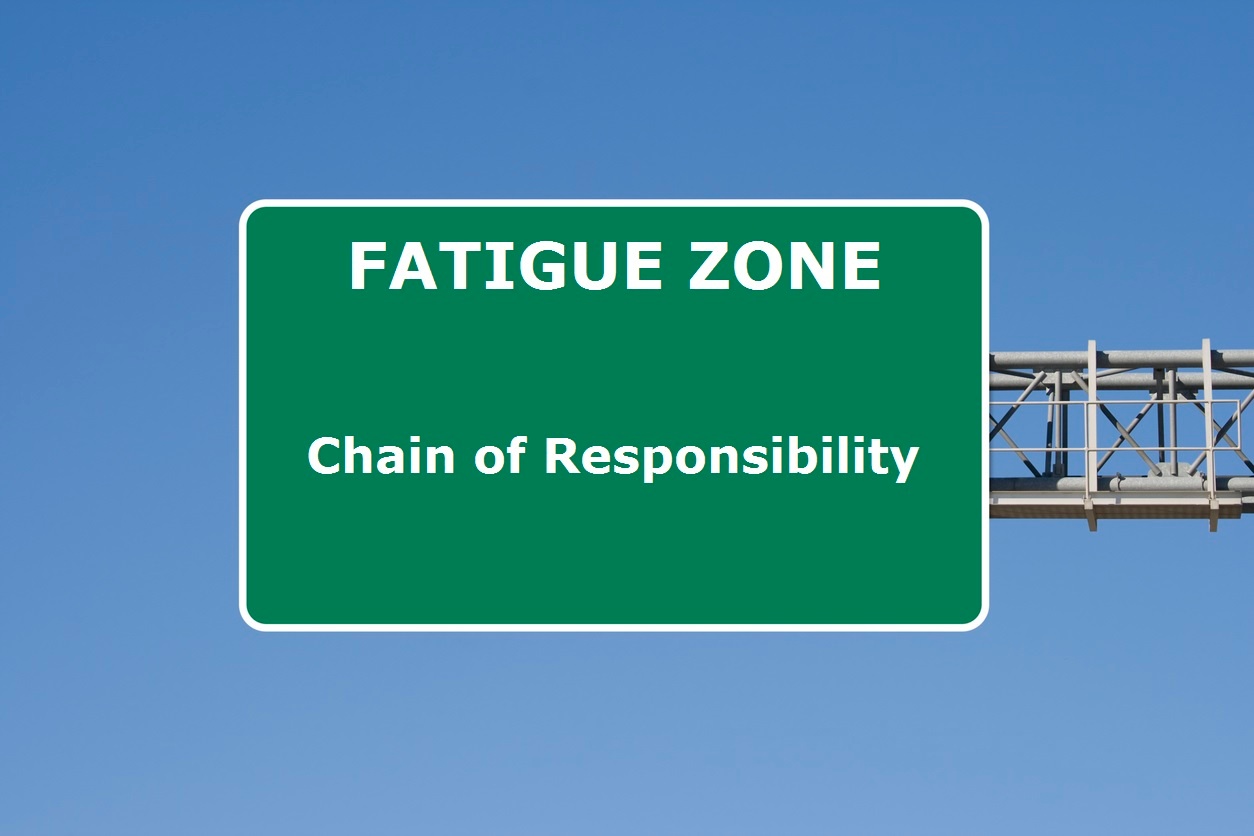Driver Fatigue - Are You In The Chain of Responsibility?

This blog, about driver fatigue, is part of a series focusing on Chain of Responsibility, including this exclusive white paper.
Fatigue is the "gradual decline of physical and mental alertness that leads to drowsiness or sleepiness." (2: Part 1) When this starts to happen reaction times increase, judgment and memory are impaired and field of vision begins to decrease. At the wheel of any vehicle a person suffering from such fatigue is a serious hazard, to themselves and anybody else on the road.
While the trucking industry likes to play up its safety record, ample evidence shows that truck drivers do suffer from fatigue; it has been cited as the cause of 31% of accidents involving heavy vehicles. (2:"Fatigue and the carrier industry")
Fatigue is not just the product of long hours at the wheel, but can result from a much more complex set of interconnected factors. Anything from circadian rhythms, to general health, possible sleep disorders and the number of hours awake can affect an individual's fatigue level.
Length of shifts, rotating shifts and inordinately high demands all come into play on the employer's side. And factors like ergonomics, weather and the relative monotony of a task can also play a part.
In the demanding, high intensity 24-7 world of commercial trucking, there is significant pressure for drivers to ensure deliveries are made on time. As well, there is pressure to take on as many loads as possible to make higher wages. The result can all too often be a driver who tries to do it all without adequate rest.
This pressure needs to be counteracted with understanding and policies across the Chain of Responsibility in the Supply Chain—all those with the ability to affect a driver's level of fatigue, from the direct employer's senior management, to those with whom he interacts along the supply chain, including dispatchers, and receivers or loaders at the dock doors—to ensure that the driver is able to do his job in a manner that is safe and responsible.
Failure to take these steps can have serious consequences not only for the driver who may become involved in a crash, but all the way to the boardroom and on the cargo owner's side. It affects the health and well-being of drivers; the safety of all road users; and impacts business productivity.
Fortunately, there is a wealth of information readily available to help recognize, prevent and treat fatigue before it becomes a matter of liability for your enterprise. (3)
In Quebec, the Société de l'Assurance Automobile has published a comprehensive guide on Driver Fatigue for the carrier industry. It explains in detail the causes and physiology of fatigue and how it impairs the ability to drive.
It goes on to detail how recognize and manage the risks driver fatigue presents, and offers practical tips on the recognition and prevention of fatigue for the driver, from the immediate (stop and go for a walk or take a short nap), to the bigger picture (ensure adequate sleep, avoid holding multiple jobs and get screened for sleep disorders).
Another source is the North American Fatigue Management Program (NAFMP). This program is offered in the US and Canada, and is jointly sponsored by governments and the trucking industry.
Supported by comprehensive research and testing by volunteer carriers, the NAFMP outlines the components necessary for a successful fatigue management program. They are:
- A corporate change process;
- Risk-based modifications to scheduling based on fatigue management guidelines;
- Fatigue management training;
- Sleep apnea screening and treatment. (1: p9)
The last point is a major new area of focus for trucking companies, after it was discovered that sleep apnea can contribute significantly to driver fatigue. Testing for apnea is one of the pillars of the NAFMP, thanks to the finding that "drivers suffering from sleep apnea were identified and treated, and increased their observed sleep time by 73% (3.9 hours of sleep to 6.8 hours)…Drivers experienced 44% fewer lapses in vigilance following [a fatigue management program] intervention." (1: piii).
The NAFMP website offers links to the online training if you are signed up, and a comprehensive ROI calculator that will show the benefit of enrolling in the driver monitoring and training program.
No matter where in the supply chain your business falls, chances are you have interactions with truckers. Ensure you have taken steps to make the roads safer for everyone by doing what you can to keep fatigued drivers off the road. It’s your responsibility too.
To get more information regarding how your organization can prevent incidents caused by heavy vehicles - whether due to driver fatigue or other controllable influences like alcohol, drugs or speeding to meet impossible deadlines, we invite you to download our White Paper:
Resources:
1. North American Fatigue Management program. www.nafmp.com/en/
2. Driver Fatigue: Fatigue Management Guide for Use by the Carrier Transportation Industry, Sociét de L'Assurance Automobile, Quebec.
Driver Fatigue and Chain of Responsibility in the Supply Chain
3. The road to wellness: Course offering on OTA website. http://ontruck.org/ota-online-training/road-wellness/

